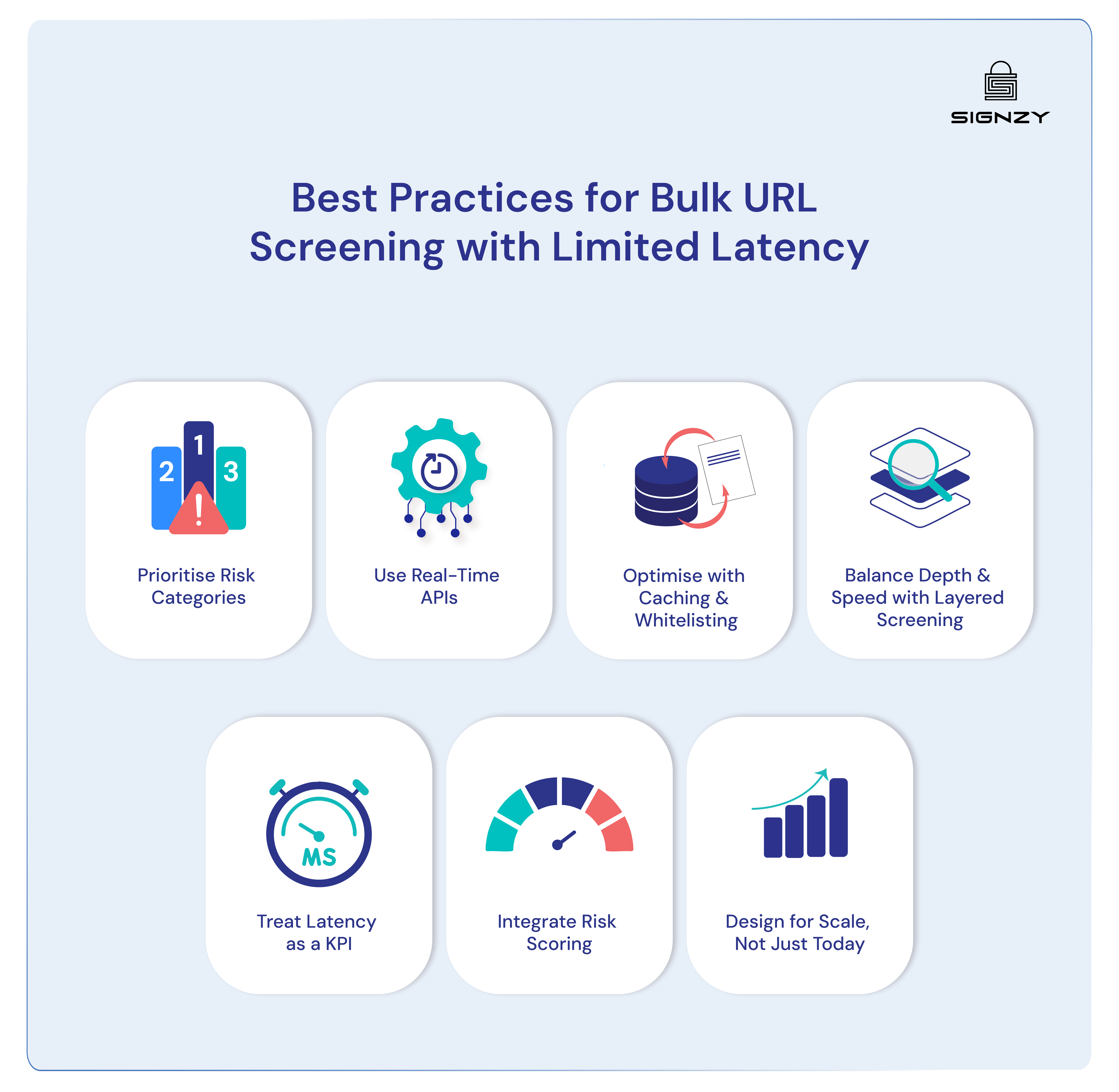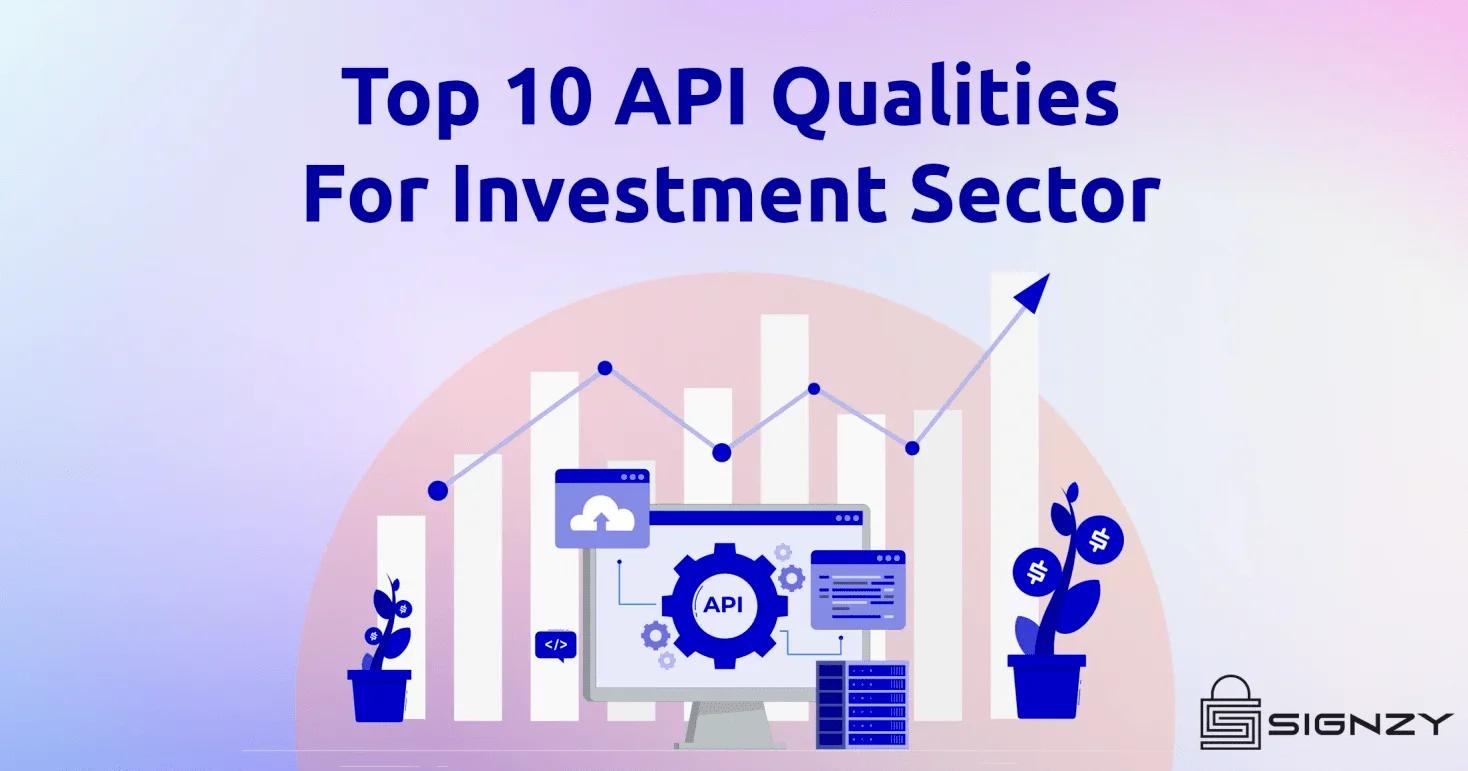Best Practices for Large-Scale URL Screening with Limited Latency
Every modern business interacts with URLs and domains from customer sign-ups and merchant onboarding to payment processing and compliance checks. Yet, behind every link could be risk: fraudulent websites, fake storefronts, disposable domains, or malicious actors.
That’s where URL screening and domain screening come in. These processes verify whether a website or domain is safe, legitimate, and trustworthy. At a small scale, it’s straightforward. But when you’re dealing with bulk URL screening, checking thousands or even millions of domains, things get complicated.
The biggest challenge? Latency. If screening slows down transactions, it frustrates customers and hurts conversions. But if you prioritise speed at the cost of accuracy, you leave the door open to fraud and compliance violations. The art of large-scale domain screening is balancing both.
Related Resources
What Exactly Is Large-Scale URL Screening?
At its simplest, URL screening involves verifying whether a web address is valid, safe, and not associated with fraudulent activity. Domain screening extends this to the domain level, verifying ownership, history, reputation, and risk profile.
- Example: A fintech onboarding a merchant must ensure the merchant’s domain is real and not a front for fraud.
- Example: An e-commerce platform validates thousands of seller websites daily to protect buyers.
When we refer to bulk URL screening, we mean this process occurring at scale: running checks on massive datasets, often in real-time, with minimal delay.
The Latency Problem in Bulk Domain Screening
Imagine this: you’re verifying 100,000 domains simultaneously. If each check takes even 1 second, you’re already looking at more than a full day of processing. That’s unacceptable when you need results in real time.
High latency slows down business:
- Transactions take too long.
- Customers abandon sign-ups.
- Fraud slips through while systems lag.
The best practice is not to simply make screening faster, but to design screening intelligently so that speed and accuracy coexist.
Best Practices for Bulk URL Screening with Limited Latency

Here’s what works in the real world:
1. Prioritise Risk Categories
Not every domain is equally risky. For instance, a well-established e-commerce brand doesn’t need the same depth of checks as a newly created domain from a suspicious region.
Best practice is to tier your screening:
- High-risk domains (new registrations, free-hosting, disposable email providers, flagged categories): Run deep, multi-layered checks.
- Medium-risk domains (low reputation scores, unusual activity patterns): Run balanced checks with extra data points.
- Low-risk domains (established businesses, validated SSL certificates, strong history): Run lighter checks to save time.
This way, you avoid wasting resources screening safe domains over and over, and you focus latency where it really matters.
2. Use Real-Time APIs (Not Batch Files)
In the past, companies would upload large CSV files of domains for overnight processing. That doesn’t work anymore. Fraud moves in real time, so screening must too.
The best practice is to use real-time URL screening APIs. These allow you to:
- Plug screening directly into sign-up or transaction flows.
- Screen thousands of domains per second.
- Get instant feedback, often under 200ms per check.
This means customers never feel the delay, but you still catch risks instantly.
3. Optimise with Caching and Whitelisting
When screening at scale, you’ll see the same domains appear again and again. Without optimisation, you’re wasting resources re-checking them.
Two simple but powerful techniques:
- Caching: Store the results of previous screenings and reuse them for a set period.
- Whitelisting: Maintain a safe list of trusted domains that don’t need repeated screening.
Together, these cut down redundant work, reduce costs, and significantly lower latency in bulk domain screening.
4. Balance Depth and Speed with Layered Screening
Should you check everything deeply? Or keep it surface-level for speed? The truth: you need both.
- Shallow checks: Syntax validation, blacklist lookups, and quick DNS checks. These are lightning fast.
- Deep checks: WHOIS lookups, SSL validation, history analysis, fraud databases, and reputation scoring.
The trick is layered screening: start shallow on every domain, then escalate only the suspicious ones to deeper screening. This way, 90% of domains move fast, while the risky 10% get full attention.
5. Treat Latency as a KPI
You measure fraud rates and compliance metrics, why not latency?
Set latency benchmarks:
- Average response time per domain.
- P95 and P99 latency (what 95% and 99% of requests look like).
- Time saved by caching/whitelisting.
This visibility helps you pinpoint bottlenecks, justify investments, and prove that your bulk URL screening pipeline is both secure and fast.
6. Integrate Risk Scoring
A binary pass/fail isn’t enough. It slows teams down, creates false positives, and frustrates customers. Instead, use risk scoring. Each domain gets a score from “low-risk” to “high-risk,” based on factors like:
- Domain age
- Hosting provider reputation
- SSL status
- Geographic origin
- Association with known fraud databases
This lets you:
- Approve low-risk domains instantly.
- Flag medium-risk ones for human review.
- Block high-risk domains automatically.
Result? Faster throughput and smarter decision-making.
7. Design for Scale, Not Just Today
Screening 10,000 domains a day is one thing. Screening 10 million is another. That’s why your bulk URL screening must be built for tomorrow’s volume. Best practices include:
- Horizontal scaling: Add servers to handle load.
- Load balancing: Evenly distribute requests.
- Parallel processing: Run multiple screenings simultaneously.
If you’re serious about scaling, your system should be cloud-ready, elastic, and designed to grow with your business.
Real-World Applications of Bulk Domain Screening
- Financial Services: Verify merchant domains during onboarding to block fraud.
- E-commerce: Validate thousands of seller sites daily to protect buyers.
- Compliance: Screen domains against global sanctions and watchlists in real time.
- Email Providers: Improve deliverability by filtering fake or throwaway sender domains.
In every case, speed plus accuracy equals trust.
The Signzy Advantage
At Signzy, we know that bulk domain verification isn’t just a technical task. It’s mission-critical. That’s why our solution is built for:
- Scale: Handling millions of screenings with no slowdown.
- Speed: Low latency, real-time API calls that fit seamlessly into workflows.
- Intelligence: Advanced risk scoring for smarter approvals.
- Security: Designed for fraud prevention and compliance-first industries.
When speed matters, Signzy makes sure you don’t sacrifice safety.
Large-scale URL screening with limited latency isn’t just about faster checks. It’s about building an intelligent, layered system that balances speed and depth, while scaling for the future. By prioritising risk categories, using APIs, optimising with caching, and adopting risk scoring, you can turn bulk domain verification into a competitive advantage. Because in the real world of fraud, compliance, and customer trust, speed matters, but accuracy matters more.
FAQ
What is URL screening?
What’s the difference between URL screening and domain screening?
Why does latency matter in bulk domain screening?
How does risk scoring work?
Can URL screening scale to millions of domains?

Shivam Agarwal
Shivam heads the go-to-market strategy at Signzy. He holds the CFA charter and a strong background in financial operations, PE analysis and strategy. His prior roles include business strategy and private-equity analysis in the financial services and fintech domain, giving him deep insight into client needs, risk-adjusted economics and monetisation models for compliance & identity verification platforms.








